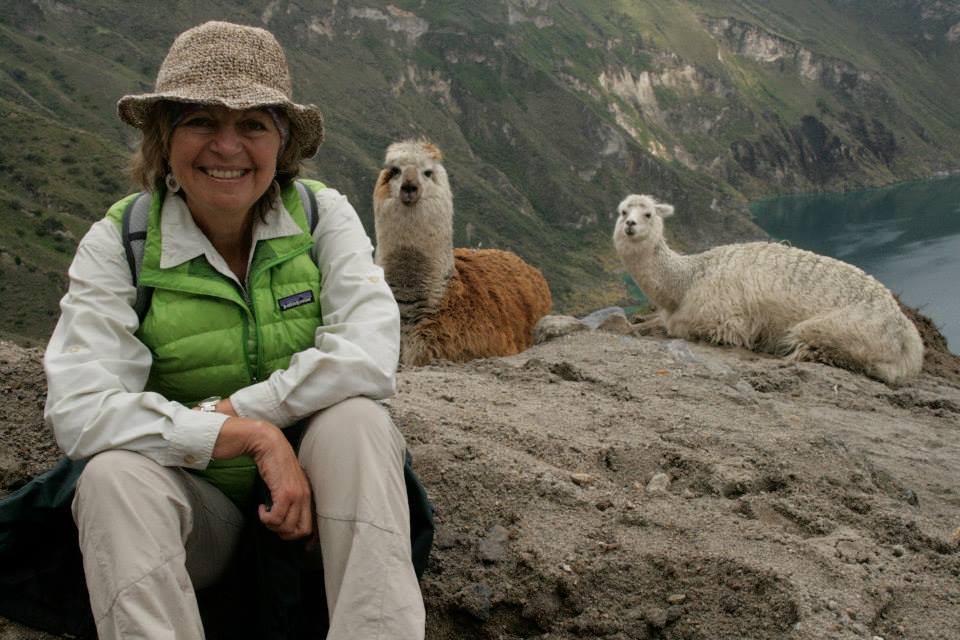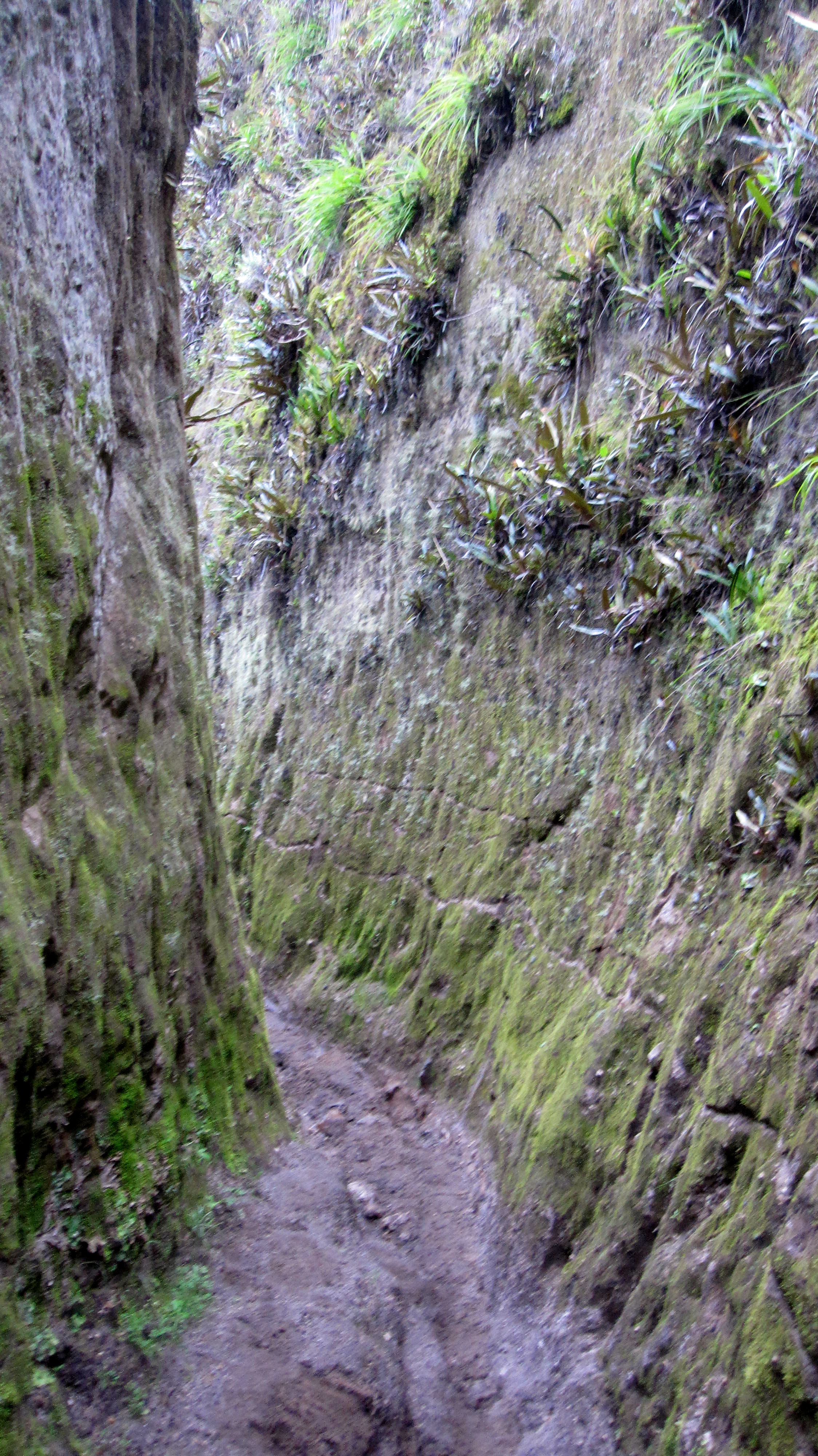Like every day in the morning, the weather was beautiful and allowed us to get a
stunning view down into the Quilotoa crater. Sparkling green water is filling the 2
miles wide caldera, formed by a collapse of the volcano 800 years ago. The natives
believe that the lake is bottomless. It does look like that. The green color of the water
is caused by minerals..

After a short dive into the chilly water, we hiked the nearly vertical slopes up
again. Because of the high altitude, the breath was short and the steps slow.

We rested beside two Lamas. Motionless, they were just sitting and looking. Every
place possible is used for agriculture. Fields of crops, often vertically stretched up to
the top of the mountains, are covering the slopes. Farmers plant their crops by
digging for each plant one hole in the ground. Everything is done by hand.

Mist covering the top of the mountain

Farmers working in their fields
Walking through the narrow, deep gorges was most fascinating. The vertical loess
slopes were covered by moss, bromeliads and other exotic plants. Loess is a soil,
containing sand and quartz and hardens even more when it gets wet. This is the
reason why there are hardly any landslides in Ecuador.

Deep, narrow canyon with vertical walls
In a village, children were welcoming us. They have fun.

In the evening, we arrived in Chugchilán, a little village where we found the most
charming place to stay overnight. Mama Hilda, a place to stay longer..

– Text and pictures contributed by Garyo –
